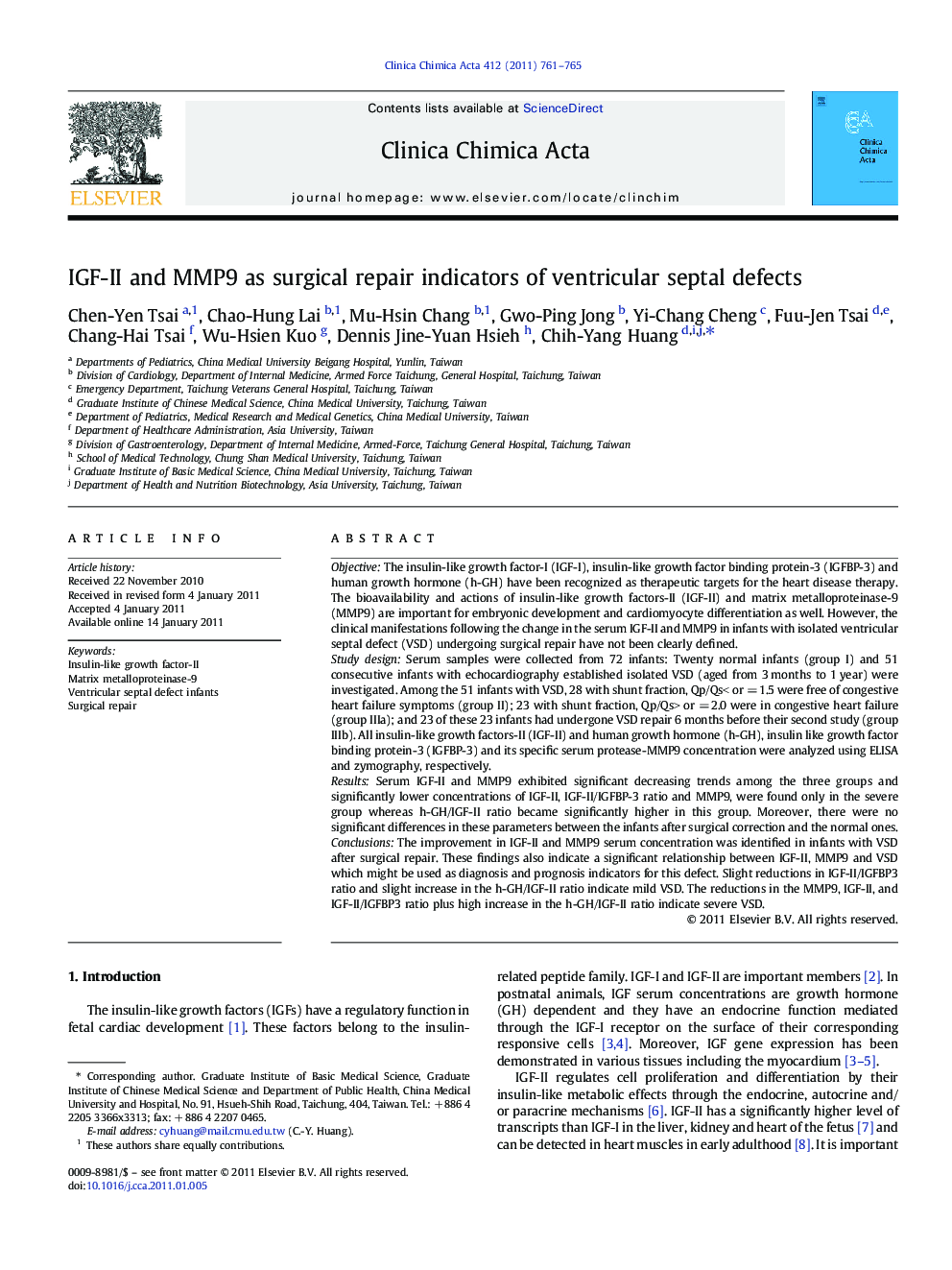| Article ID | Journal | Published Year | Pages | File Type |
|---|---|---|---|---|
| 1966296 | Clinica Chimica Acta | 2011 | 5 Pages |
ObjectiveThe insulin-like growth factor-I (IGF-I), insulin-like growth factor binding protein-3 (IGFBP-3) and human growth hormone (h-GH) have been recognized as therapeutic targets for the heart disease therapy. The bioavailability and actions of insulin-like growth factors-II (IGF-II) and matrix metalloproteinase-9 (MMP9) are important for embryonic development and cardiomyocyte differentiation as well. However, the clinical manifestations following the change in the serum IGF-II and MMP9 in infants with isolated ventricular septal defect (VSD) undergoing surgical repair have not been clearly defined.Study designSerum samples were collected from 72 infants: Twenty normal infants (group I) and 51 consecutive infants with echocardiography established isolated VSD (aged from 3 months to 1 year) were investigated. Among the 51 infants with VSD, 28 with shunt fraction, Qp/Qs< or = 1.5 were free of congestive heart failure symptoms (group II); 23 with shunt fraction, Qp/Qs> or = 2.0 were in congestive heart failure (group IIIa); and 23 of these 23 infants had undergone VSD repair 6 months before their second study (group IIIb). All insulin-like growth factors-II (IGF-II) and human growth hormone (h-GH), insulin like growth factor binding protein-3 (IGFBP-3) and its specific serum protease-MMP9 concentration were analyzed using ELISA and zymography, respectively.ResultsSerum IGF-II and MMP9 exhibited significant decreasing trends among the three groups and significantly lower concentrations of IGF-II, IGF-II/IGFBP-3 ratio and MMP9, were found only in the severe group whereas h-GH/IGF-II ratio became significantly higher in this group. Moreover, there were no significant differences in these parameters between the infants after surgical correction and the normal ones.ConclusionsThe improvement in IGF-II and MMP9 serum concentration was identified in infants with VSD after surgical repair. These findings also indicate a significant relationship between IGF-II, MMP9 and VSD which might be used as diagnosis and prognosis indicators for this defect. Slight reductions in IGF-II/IGFBP3 ratio and slight increase in the h-GH/IGF-II ratio indicate mild VSD. The reductions in the MMP9, IGF-II, and IGF-II/IGFBP3 ratio plus high increase in the h-GH/IGF-II ratio indicate severe VSD.
